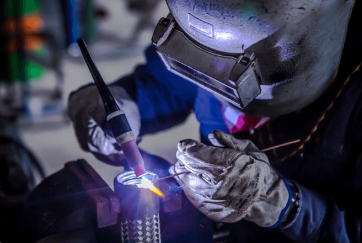TIG welding (Tungsten Inert Gas welding) has several advantages over MIG welding (Metal Inert Gas welding)

TIG welding (Tungsten Inert Gas welding) has several advantages over MIG welding (Metal Inert Gas welding). Here are the main reasons why TIG welding is considered better in some cases:
-
Higher weld quality: TIG welding produces cleaner and more precise welds, which is especially important for thin materials or when working with high-quality metals such as stainless steel and aluminum. This process allows for better heat control and avoids defects like slag or porosity.
-
Better control over the process: In TIG welding, the welder has full control over the process since the tungsten electrode is not automatically fed. This allows for precise adjustments to the current and welding time, which is crucial for complex or delicate work.
-
Suitable for thin materials: TIG welding is ideal for working with thin metals as it provides a more controlled heat application, preventing overheating of the material.
-
Less contamination: TIG welding uses an inert gas, typically argon, to protect the weld pool from contamination. This results in a very clean and aesthetically pleasing weld without unwanted impurities.
-
Versatility with materials: TIG welding can be used for a wide range of metals such as aluminum, copper, stainless steel, and other alloys, providing excellent results with each material.
However, it's worth noting that MIG welding also has its advantages, such as faster work and ease of use for thicker materials. But TIG welding is often chosen for high-quality or delicate welds that require precision and control.
